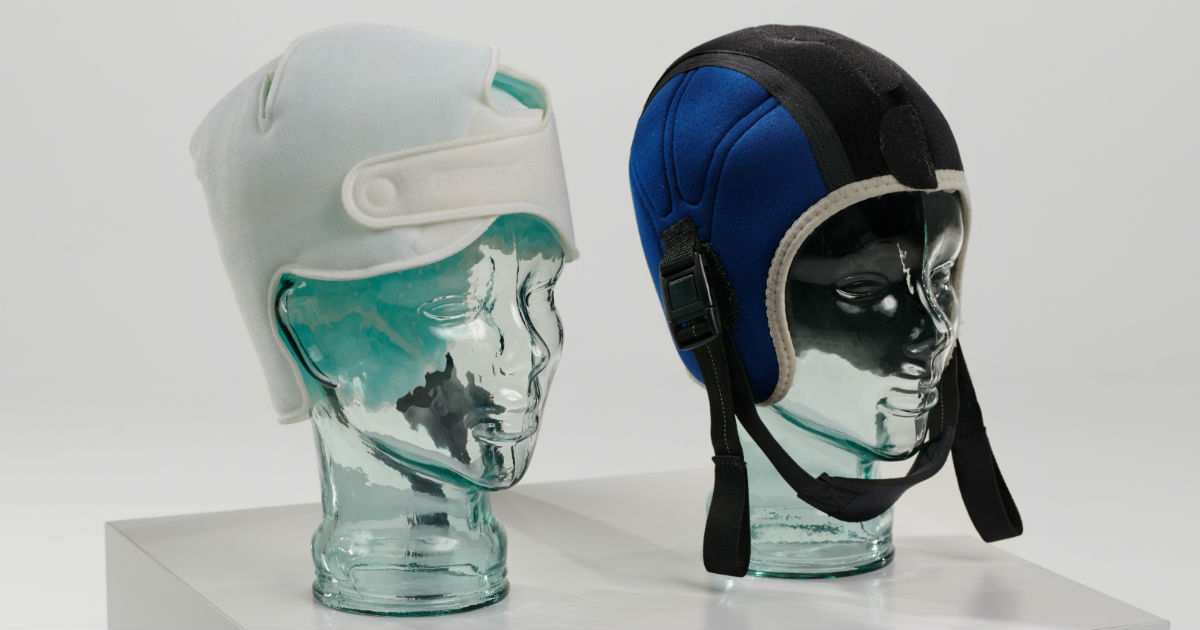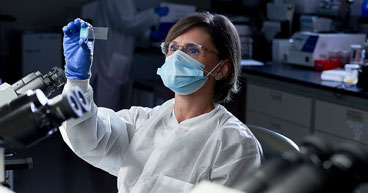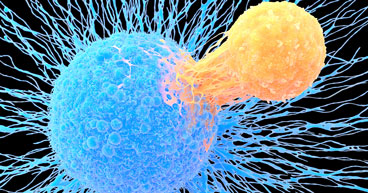
Caps, hats and scarves are common fashion accessories for many cancer patients who undergo chemotherapy, since hair loss is a common side effect of the treatment. While hair almost always grows back, alopecia—as the condition is known in the medical field—may be devastating to patients already going through a difficult journey.
Now, some cancer patients may be able to use a different kind of cap during and after chemotherapy—not one that hides their balding scalp, but may help prevent them from losing their hair or reduce the amount they lose.
To battle hair loss caused by chemotherapy, some patients, hospitals and infusion centers are turning to cooling caps, a supportive therapy cleared by the U.S. Food and Drug Administration (FDA) for some patients to protect hair cells from chemotherapy drugs.
Cooling caps, cold caps or scalp cooling therapy systems came into the spotlight recently when CNN senior national correspondent and anchor Sara Sidner revealed on air that she has been diagnosed with stage 3 breast cancer and is undergoing chemotherapy. A People magazine story on Sidner’s cancer journey includes a photo of her wearing a cooling cap during an infusion session. Sidner said she is still losing some hair but is hoping the cooling cap sessions will reduce her hair loss.
In this article, we’ll discuss:
- What’s a cooling cap?
- Is cold capping painful?
- What does the research say about cold caps and chemotherapy?
- How much do cooling caps cost?
- Tips and advice for dealing with alopecia
If you’ve been diagnosed with cancer and are interested in a second opinion on your diagnosis and treatment plan, call us or chat online with a member of our team.
What’s a cooling cap?
While chemotherapy drugs are designed to attack rapidly growing cancer cells, some drugs may also damage fast-growing healthy cells, such as those in the digestive system, bone marrow and hair follicles. As a result, some patients receiving chemotherapy may experience digestive issues, a suppressed immune system and hair loss.
The degree of hair loss may vary widely from patient to patient, even among those using the same drugs or undergoing similar treatment regimens. If hair loss does occur, it usually begins within two weeks of starting chemotherapy and may increase one to two months after the start of treatment.
Theoretically, cooling caps work two ways to protect hair cells from damage from chemotherapy drugs:
First, the lower temperature of the scalp constricts cells, making it more difficult for the drugs to penetrate.
Second, the cooler temperature reduces the cellular activity in the follicles, making them a less likely target for chemotherapy drugs seeking out fast-growing cells.
Is cold capping painful?
Cooling caps are not invasive or toxic. But some patients report side effects during and after use.
Cooling caps need to be very cold and fit tightly to be effective, which may lead to some pain or discomfort.
A Japanese study of patients who used scalp cooling found that 30 of the 32 patients experienced an adverse effect from the treatment. Among the common side effects reported:
- Jaw pain due to an overtightened strap
- Headache
- Discomfort from the cold
- Nausea
- Forehead pain
- Dizziness
The study said that clinicians were able to successfully manage all the side effects.
According to an article on breastcancer.org, patients experience the most discomfort in the first 10 minutes of wearing the cap, but then become more comfortable as the session progresses. Patients should dress in warm clothing or use blankets to help to reduce the chilling sensation.
What does the research say about cold caps and chemotherapy?
Cooling caps work in two different ways:
Scalp cooling therapy systems are connected to a device that pumps cold air into the cap during therapy.
Cold caps are stored in a freezer at very low temperatures or use dry ice or frozen gel packs that are inserted into the cap when they are ready to use.
Cooling therapy or cold caps are a relatively new therapy to reduce the risk of hair loss. The FDA first approved the caps in 2015 for chemotherapy patients with breast cancer, then cleared their use for patients with other cancers in 2017.
The American Cancer Society (ACS) reports that studies of cold caps “have had conflicting results.” Studies of newer cooling cap technologies, however, show them to be effective. “Recent studies of women getting chemo for early-stage breast cancer have found that at least half of the women using one of these newer devices lost less than half of their hair,” the ACS says.
According to a study published in 2017 in the Journal of the American Medical Association, 66 percent of women with breast cancer who used scalp cooling therapy during chemotherapy treatments saw 50 percent less hair loss than patients who didn’t use the product. Participants in that study used the cap 30 minutes before chemotherapy, during the infusion and for up to two hours after.
Cooling cap temperatures hover to just below to just above the freezing mark of 32℉ depending on the type used.
"The good news about oncology care in this millennium is that we not only focus on treating the cancer, but our hopes are to treat and manage some the side effects,” says Anita Johnson, MD, FACS, Director of Breast Surgical Oncology at City of Hope® Cancer Center Atlanta, which offers cooling cap services. “With cooling caps, our goal is to provide a possible preventable measure of chemotherapy-induced alopecia."
How much do cooling caps cost?
Cooling caps therapy may cost up to $3,000 during the course of a chemotherapy treatment. Some hospitals may provide scalp cooling therapy during chemotherapy. If they don’t, patients may choose to purchase or rent their own caps.
A sweeping study of 600 oncology providers by the University of Michigan identified multiple reasons why doctors may not consider or recommend scalp cooling therapy for their patients. While most of the doctors surveyed said they were not opposed to using the technology, chief among the reasons they would not are financial concerns.
Costs vary depending on the type of cap used. Among the more popular brands:
- Penguin™ Cold Caps offer various kits that include gels, gloves and other accessories to rent for $449 to $499 per month.
- Dignicap® says its costs vary depending on the location but average $1,500 to $2,000 for a complete treatment.
- Arctic Cold Caps a basic rental program for $379 per month to more sophisticated programs for up to $799.
Patients may need to pay deposits or shipping fees depending on the provider. They should also check with their insurance carrier to see if their scalp cooling therapy may be covered.
Tips and advice for dealing with alopecia
Here are some other ways patients may deal with or potentially reduce the amount of hair loss:
- If you decide on a wig or hairpiece, have it ready in advance before hair loss occurs. This way, you can match it to your natural hair color, style and texture.
- Try scarves, caps, turbans or hats as an alternative to wigs and hairpieces.
- Use a soft bristle brush and avoid too much brushing or pulling of hair.
- Use mild, gentle shampoos and conditioners. Rinse your hair thoroughly and gently pat dry to avoid damaging your hair.
- Avoid coloring, perming or relaxing the hair.
- Avoid using hair dryers, electric rollers or curling irons.
- Limit the use of hair clips, barrettes, elastic bands, bobby pins and hair sprays. Avoid braiding or placing hair in a ponytail.
- Hair usually regrows six to eight weeks after therapy but be prepared for it to grow back a slightly different color and texture at first.
If you’ve been diagnosed with cancer and are interested in a second opinion on your diagnosis and treatment plan, call us or chat online with a member of our team.



